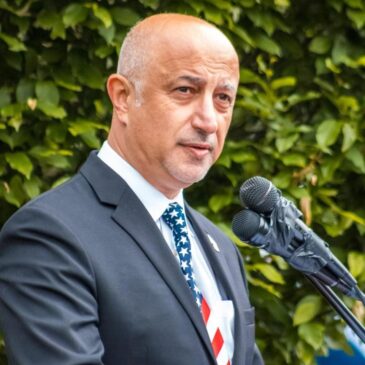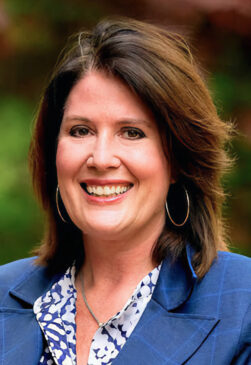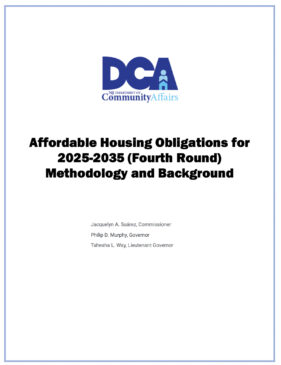
MONTVALE—Mayor Michael Ghassali says New Jersey’s newly released affordable housing mandates, unveiled today by the state’s Department of Community Affairs (DCA), prove the need for his coalition’s legal challenge to related state law, and he has stated that he intends to request the court issue a stay.
The new obligations require Montvale to create 348 affordable housing units over the next decade, a figure that could balloon to 1,740 total units when factoring in 20% inclusionary zoning. Ghassali, alongside his Local Leaders for Responsible Planning (LLRP), argues that these numbers are excessive and will severely strain the borough’s resources, sparking a broader debate over how the state addresses affordable housing needs.

“These numbers were expected to be burdensome, but the reality is even worse,” Ghassali said online in response to the DCA’s release. “The State has handed us housing requirements that defy reality and will force local governments to stretch their resources to the breaking point, while diverting attention from other critical community needs.”
The release of the DCA’s Fourth-Round affordable housing obligations, which covers the 2025-2035 period, outlines each municipality’s responsibility to provide affordable housing as part of the state’s long-standing Mount Laurel doctrine. Ghassali and the LLRP have already filed a lawsuit seeking to block the mandates, calling the obligations an unfunded mandate that could overwhelm small municipalities like Montvale.
[Where does your town stand in the report? We’ve broken down the numbers. Feel free to jump ahead to Understanding the Affordable Housing Obligations for Montvale and Neighboring Towns]
A stay on the state’s affordable housing mandates would temporarily halt the enforcement of the new obligations while their lawsuit proceeds. By filing a stay, critics aim to “stop the clock” on the requirement to adopt affordable housing plans, arguing that immediate compliance would place an undue burden on the municipality. A stay would prevent Montvale from being forced to meet the mandates while the court reviews the case, allowing more time to argue against the obligations without the threat of penalties or deadlines.
Advocates See Opportunity for Smart Growth
While Ghassali fights to halt the mandates, other organizations, including New Jersey Future, are urging municipalities to embrace the housing requirements as a catalyst for thoughtful development and community revitalization.
“Today, the starting pistol for good planning went off with a bang,” said Peter Kasabach, executive director of New Jersey Future, in response to the DCA report’s release. “The affordable housing guidance numbers published by the NJ Department of Community Affairs are the signal for municipalities to focus and accelerate good planning that not only meets their affordable housing obligations but creates the opportunity to plan and redevelop their community in a thoughtful and smart way.”
Kasabach believes that the new mandates can lead to more sustainable, walkable communities, where housing is integrated with schools, jobs, and public services. He sees this as an opportunity to strengthen neighborhoods while addressing the state’s critical shortage of affordable housing.
Waiting for Fair Share Housing Center’s Take
Previously, Alex Staropoli, a spokesperson for the Fair Share Housing Center, which advocates for affordable housing across the state, criticized Ghassali’s effort as “just making noise” rather than offering “real solutions.”
Staropoli pointed out that urban aid municipalities, which tend to have higher concentrations of low-income and substandard housing, face even greater affordable housing obligations than towns like Montvale. “Urban aid municipalities do have affordable housing obligations under new legislation and always have under the Mount Laurel Doctrine. Their obligations are based on existing substandard housing — the present need — and often exceed those of towns like Montvale,” she said.
Staropoli further criticized Ghassali’s legal challenge as an attempt to block affordable housing for low-income residents and communities of color. “Mayor Ghassali’s effort to undermine the Mount Laurel Doctrine is just another attempt to exclude low-income residents and people of color from his town,” she added.
She also emphasized that while the newly passed legislation is a step in the right direction, it is far from a complete solution to the state’s affordable housing crisis. “The affordable housing crisis in New Jersey requires a multi-pronged approach. The Legislature and Governor’s actions in passing Assembly Bill 4/Senate Bill 50 are a strong step towards addressing that crisis. More is needed — even full compliance with Mount Laurel would still leave a significant deficit of affordable homes. It’s time for mayors to propose real solutions instead of just making noise.”
Sen. Schepisi Adds to Criticism

Meanwhile, Sen. Holly Schepisi (R-Bergen), added her voice to those criticizing the DCA’s new mandates. Schepisi emailed a statement expressing concern that the housing obligations will hurt Bergen County residents, who already face some of the highest property taxes and worst traffic congestion in the state.
“For an administration and Democrat [sic]-controlled legislature that claims to care first most about the environment and affordability, they are trying to force through an environmentally disastrous, cost prohibitive, unrealistic, and unachievable plan in the nation’s most densely populated state,” Schepisi said. She warned that Bergen County residents, already struggling to make ends meet, will be hit hardest under the new mandates. “This will undoubtedly exacerbate our affordability crisis.”
Schepisi also pointed out that, despite the state’s focus on affordable housing, wealthy developers are often the biggest beneficiaries, while urban communities are increasingly gentrified and housing costs continue to rise.
Details of the DCA Report
Released hours ago, the DCA’s report outlines the methodology for calculating each municipality’s affordable housing obligations for the next decade. The report was prepared following Gov. Phil Murphy’s signing of P.L. 2024, c.2, a new law aimed at ensuring municipalities contribute their fair share of affordable housing in compliance with the state’s Mount Laurel doctrine.
Montvale’s obligation of 348 affordable units is part of a broader statewide effort to address the needs of low- and moderate-income households. The DCA calculated a present need of 65,410 units and a prospective need of 84,698 units across New Jersey’s 564 municipalities, based on data from the U.S. Census Bureau and HUD’s Comprehensive Housing Affordability Strategy.
However, Ghassali contends that the numbers don’t reflect local realities, particularly for smaller towns like Montvale. He argues that these mandates would force excessive development, straining local resources and infrastructure while threatening the borough’s character.
In the meantime, Ghassali remains firm in his commitment to defending Montvale from what he sees as overreach by the state. “We are fighting and will continue to fight with our coalition,” he said, as the borough prepares for what could be a long legal battle.
Free mums, pumpkins!

Speaking of small-town charm, in the same resident alert discussing the affordable housing situation, Ghassali posted that the governing body cordially invite all Montvale residents to visit DePiero’s Farm Stand & Greenhouses on Saturday, Oct. 19 from noon to 2 p.m. He said borough officials will be there to give out free pumpkins and mums to Montvale residents
“The borough purchased the farm and closed on it last month. The farm will remain a farm and we will all get to enjoy it for generations to come,” Ghassali said. He added a note of thanks to Montvale Landscaping Inc. for donating the pumpkins.
Ghassali also promoted the remainder of his October “Walk with Mayor Mike” outings: “Join Mayor Mike for a walk and conversation every Saturday in October at the Wegmans and District walking track. Meet at the front door of Borough Hall on Oct. 5, 12, 19, and 26. Walks start at 9 a.m.”
Understanding the Affordable Housing Obligations for Montvale and Neighboring Towns
Montvale’s affordable housing obligations, as reflected in the data from the report, show both similarities and differences compared to nearby towns. In Pascack Press‘s reading, here’s how Montvale compares in the Pascack Valley:
Present Need
- Montvale has a present need of 30 units, which is higher than most neighboring towns, such as Emerson, Hillsdale, and Woodcliff Lake, which have 0 present need.
- Park Ridge and River Vale have much higher present needs, with 137 and 49 units respectively, meaning these towns have more substandard housing to address.
Land Capacity Factor
- Montvale has a relatively high land capacity factor of 1.91%, suggesting that it has more available land for new housing development compared to other towns like Park Ridge (0.21%) and River Vale (0.58%).
- Woodcliff Lake has a similarly high land capacity factor of 1.77%, but other towns like Westwood (0.14%) and Hillsdale (0.77%) show much lower land availability.
Income Capacity Factor
- Montvale’s income capacity factor of 1.30% is comparable to neighboring towns. For example, Hillsdale (1.37%) and River Vale (1.46%) have slightly higher income capacity, while Park Ridge (1.21%) and Emerson (0.89%) are lower.
- Woodcliff Lake stands out with the highest income capacity factor at 1.61%, indicating a higher ability of its residents to support housing development.
Average Allocation Factor
- Montvale has an average allocation factor of 1.26%, which places it among the towns expected to contribute significantly to regional affordable housing needs.
- Woodcliff Lake has the highest allocation factor at 1.59%, indicating that it has both the land and the financial capacity to meet its obligations.
- In contrast, Park Ridge (0.50%) and Emerson (0.65%) have much lower average allocation factors, suggesting their obligations are smaller.
Summary:
Montvale has a moderate present need but stands out for its high land and income capacity, which positions it as one of the towns more capable of supporting new housing development. While it doesn’t have the highest present need (compared to towns like Park Ridge or River Vale), its capacity to develop land for affordable housing is one of the highest in the region, alongside Woodcliff Lake. This suggests that Montvale is expected to play a significant role in meeting the region’s affordable housing needs, despite having fewer immediate substandard housing units to address.

